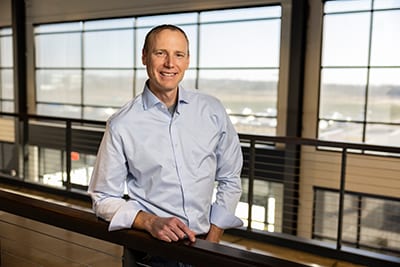Farmers Need Autonomy Now
Autonomous tractors and how they will help change the world
In many ways agriculture has been driving the technology industry forward for more than a century.
From overcoming sticky Midwest soil with an innovative steel plow 185 years ago, to launching its first two tractors in 1918, John Deere has helped lead the way.

"You fast forward a century from those first tractors and you'll find some of the most advanced robotic machines are being used on the farm to feed the world," said Jahmy Hindman, Chief Technology Officer at John Deere. "If you visit a farm, you'll see as much technology in the field as you will in Silicon Valley."
Hindman, speaking at CES 2022 in Las Vegas where John Deere revealed an autonomous tractor, told attendees today's technology is paved with advancements from the past, adding "advanced technology and innovation has always been on the farm."
He highlighted the company's many advancements in technology, including precision farming and self-steering machines that use GPS. Innovations that are now more than 20 years old.
"This precise location-sensing technology (already) enables farmers to place seeds, spread nutrients and harvest their crops without having to touch the steering wheel," he noted. "Without this self-driving technology, farming is incredibly exhausting mentally and physically. GPS technology allows farmers to spend their time in the cab of a tractor looking at the real-time data they are collecting during the job they are doing and making adjustments."
Until recently, agriculture had always been about doing more with more, Hindman noted, more horsepower, more inputs and more acres. But the digital era is changing all of that, he added, and it's coming at a critical time, as labor shortages are making it difficult for farmers to find people to help do the work.
Driverless tractors can help farmers overcome that obstacle and more with their precision technology, making it possible to take on one of the world's biggest challenges—feeding our growing population.
"The world's population is expected to grow from about 8 billion to nearly 10 billion people by 2050, increasing the global food demand by 50 percent," Hindman noted. "Farmers must feed this growing world population, and it's our job at John Deere to help them. The future of Agriculture starts now!"
